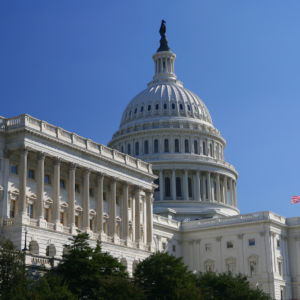In the Trump calendar, this is the year for infrastructure. During the campaign it was one of the inducements he held out to voters: $1 trillion to upgrade and renew the nation’s deteriorated roads, bridges, airports, railroads and harbors, and to expand broadband.
The White House is about to announce “principles” for infrastructure legislation. If the nation is hoping for the metaphorical equivalent of a four-lane highway, it had better brace for a bicycle path at best.
Money isn’t the only impediment to a robust approach to rebuilding the infrastructure; so is philosophy.
But first, take money. There simply isn’t a spare trillion bucks floating around the U.S. treasury. Instead, there are deficits reaching to a point beyond the horizon. Even if, optimistically, the economy puts the pedal to the metal and we get hypergrowth and big tax revenues, there’s unlikely to be big, new money to fix America.
At some point, the very condition of the infrastructure will become an impediment to growth: jammed highways, inadequate barge traffic, clogged ports and systems that can neither make goods efficiently nor deliver them to market economically.
One option for infrastructure funding is use-specific tax and in particular, the gasoline tax. The federal take is 18.4 cents a gallon for gasoline and 24.4 cents for diesel, last raised in 1993.
While fixing the infrastructure may be on many lips, Congress is taxaphobic, any tax is to be resisted. A tax is an assault on the national manhood.
That’s why politicians at every level have looked favorably on substituting gambling for taxing. Casinos and lotteries abound across the country in a cynical, collective political decision to tax through gambling; to substitute the foolish for rank-and-file taxpayers, the beneficiaries. This spares those who should be paying taxes for the services, largely education, where gambling is footing the bill. Sadly, the heaviest patrons of state-sponsored gambling are the poor. Heads the politicians win, tails the poor lose.
Trump will most certainly favor private investment and public-private partnerships. Trouble is that there’s limited opportunity here.
Not many public facilities lend themselves to private capital solutions. A bridge may convenience those who drive over it most and they may be persuaded, through tolls, to shoulder much of the cost of the operation of the structure. But a whole region may benefit from the bridge without ever driving over it.
The Gateway project to build rail bridges in New Jersey and new tunnels into Manhattan, which are failing after more than 100 years, illustrates the problem. The cost is enormous, an estimated $30 billion, more than users can ever pay. But the benefits will affect the whole region; jobs during construction, expedited commuting on faster and safer trains, and enhanced prosperity all-around.
Because Amtrak would use these bridges and tunnels, the whole East Coast passenger rail system would benefit. The cost would be shared by the immediate beneficiaries: New Jersey, New York and the federal government.
New Jersey faltered in 2010, then came on board later, influenced by damage to the existing tunnels from Hurricane Sandy. Now the U.S. Department of Transportation is balking — and on the eve of the White House infrastructure announcement.
Where the Trump administration can have a major effect without new money is something dear to its heart: easing the regulatory burden on new projects, especially pipelines and power transmission lines. These are years in the planning and more years in being litigated before, if ever, they see fruition.
In this cold spell, New England has been paying the highest prices ever for natural gas because there aren’t enough pipelines to bring in gas or facilities to handle additional liquified natural gas. Gas pipelines and electric transmission providers shouldn’t be exempt from public decision-making procedures, but they should be guaranteed expeditious and binding decisions.
It’s forgotten now, but the Trans-Alaska oil pipeline was granted federal pre-emption from legal challenges by an act of Congress in late 1973. Otherwise, building it might still be in contention in the courts.
Some things can be done for infrastructure, but don’t expect much if federal dollars are required. It’s a case of the dogs bark but the caravan moves on — along a rutted track.

